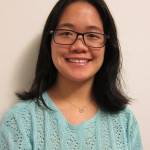
Authored by Edna Elisabeth Nyang, Lead Speech-Language Pathologist, Beijing
Many families know to consult with a speech pathologist if their child is delayed with their articulation or language skills, but they do not know who to turn to if their child has trouble tolerating certain food textures. As a result, some of these symptoms remain untreated and turn into a more serious issue. According to the Kennedy Krieger Institute, approximately 50% of children experience a form of feeding difficulty, of which 10% develop a severe feeding disorder. If a child has difficulty eating properly, this can result in weight loss for a developing child. For all families, regardless of the issue, the main goal for children who present with feeding difficulties is for them to eat a variety of foods with their family in a fun, nurturing environment.
You should consider seeking out a speech pathologist, if your child is experiencing a couple of the following symptoms: coughing and/or choking during or after swallowing, crying during mealtimes;, decreased responsiveness during feeding, dehydration, difficulty chewing foods that are texturally appropriate for age (may spit out partially chewed food), difficulty managing saliva, disengagement cues, (e.g., facial grimacing, finger splaying, or head turning away from food source), frequent congestion after meals, frequent respiratory illnesses, gagging, loss of food/liquid from the mouth when eating, noisy or wet vocal quality noted during and after feeding, extremely long feeding times, refusing foods of certain textures or types, taking only small volumes or over-packing the mouth, and vomiting (more than typical “spit up” for infants).
If you have concerns about your child and their feeding habits, I would like for you to consider the following:
- All therapy starts with an evaluation.
Typically conducted by a speech language pathologist or occupational therapist who specializes in feeding and swallowing difficulties in children, this evaluation can be done in the clinic and generally consists of replicating a mealtime that is similar to one that your child experiences at home. It should it be noted that prior to the evaluation, you may be asked to complete a questionnaire and/or keep a “food journal” over a period of time to provide the therapist with more information.
2. The therapy should focus on the whole child and not only the symptoms.
It’s extremely rare for a child to have a feeding or swallowing difficulty due to one issue. For example, some children with cerebral palsy present with low tone and have difficulty eating and chewing tougher textures because it hurts. As a result, they may start to eat less or not at all. A pediatrician may prescribe medication to stop the pain, but the learned behavior is still there and needs to be addressed.
- Family dynamics and culture should be incorporated into the therapy.
Feeding your child is cultural and emotional as it’s about creating a bond with your child and your culture. When feeding becomes challenging, it’s stressful and it impacts the entire family on a daily basis and potentially socially as the family may be less likely to socialize during mealtimes. It is extremely important for the therapist to recognize what is culturally important to you and incorporate those objectives into the therapy program.
- It will take time.
First, eating is a developmental process. When a child has difficulty eating, it means they have stalled in the midst of learning a new skill. Regardless of their age, the therapist will begin to teach the step by step process wherever they are having trouble (e.g., chewing) as a means to reaching the long term goal of eating with less restrictions. Therapists also have the advantage of charting every detail of progress and going days without seeing your child. On the other hand, when you are immersed in trying to feed your child multiple meals a day, it’s not always easy to see progress. Your therapist will give you small goals to work on every session and together, we will celebrate every single accomplishment!
- Every child will have their own journey
You may meet other parents who describe different techniques and strategies that your therapist uses with their child. It’s important to keep in mind that every child is different and that each approach will be tailored toward your child.









